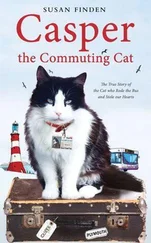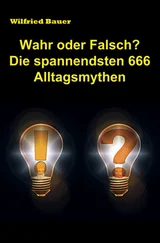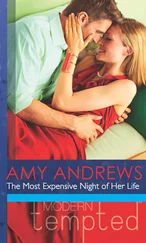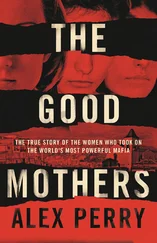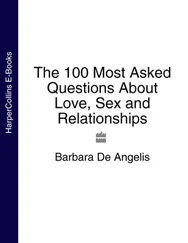Wilfried Bauer
True or False? The most, exciting 666 myths of our life
Dieses ebook wurde erstellt bei

Inhaltsverzeichnis
Titel Wilfried Bauer True or False? The most, exciting 666 myths of our life Dieses ebook wurde erstellt bei
Copyright notice Copyright notice All rights by the author of this work. Reprinting in any form and reproduction through private and public media such as radio, television, image and sound carriers, storage and distribution in electronic media or use for lectures, even in extracts, only with the author's permission. Violations will be prosecuted under criminal and civil law. Likewise, the distribution of this e-book, whether free of charge or for a fee, is prohibited and will be prosecuted under criminal and civil law upon discovery. This guide may not be converted into an "audio book" without the author's permission. Copyright © 2020 by the author: Wilfried Bauer, 99867 Gotha (Germany) Reachable under the e-mail address: info@hypnose-gotha.de or the Phone number: +49 0152 299 19 437
Foreword Foreword The word myth comes from the Greek and is linked to the gods in ancient mythology as the existence of man. Myth originally means speech, word, sound, narrative, legendary story or fairy tale. In the colloquial language today, "mythical" means rather legendary, fabulous or even fairy-tale like to vague. A harder way would be to exchange the word for "error". Some of our everyday myths are also errors. If today we speak of the myths (errors) of everyday life, then they are traditions that have been passed on from generation to generation, sometimes for centuries. Many everyday myths have only been created in modern times - since the last one hundred years. Like for example the myths (misconceptions) about the microwave or chewing gum etc. Despite scientific clarification, some of these vague statements are very persistent. Maybe some people just want to believe. It is remarkable that even highly intelligent people pass on such half-truths and believe in them themselves. In our writing we have questioned the most common ones that circulate among the population. Many of these former "truths" are now disproved and no longer tenable. Science has done a great job here as a detective. What is curious is that despite this, these errors are still very persistent in people's minds as "dogmas". We sometimes have the impression that these curiosities are engraved in people's minds forever. It is interesting to see how many such "errors" are circulating among the people of today. Let's take a closer look at the most common of these modern fairy tales. In this reading, the speaker not only emphasizes the correction of facts, but also wants to convey knowledge. That is why the book has a lexical part, like a red thread. The following example clearly demonstrates: "Myths about Coca-Cola" does not only contain the myths and misconceptions. The lexical part contains, for example, since when has the brown soda been around, who invented it, since when does it exist in Europe, how much is consumed in Germany, etc. Or the myths about chewing gum: who invented it, since when did it exist, since when in Europe, who brought it to Europe etc. The speaker wants to impart lexical knowledge besides the myths (errors). This has the advantage that the reader receives really valuable information on the basic topics (Coca-Cola, water, coffee, etc.) and can expand his knowledge.
Myths about drinks Myths about drinks
Myths about distilled water Myths about distilled water Distilled water is produced from tap or spring water by distillation. By this process the water is freed from ions, trace elements and impurities. It is used as a solvent and cleaning agent in medicine, pharmacy, biology and chemistry. In the trade there is simply distilled water for car batteries or steam irons. However, this water is not really pure distilled water. Therefore it is not used in medicine. This is demineralized water, which is demineralized in an ion exchanger. This water is available for little money. Really pure distilled water is expensive and uneconomical due to the complex production process.
Myths about Coca-Cola Myths about Coca-Cola John Stith Pemperson invented this brown lemonade in 1886. The pharmacy wholesaler Asa Griggs Candler acquired the rights to Coca-Cola for 2,300 dollars shortly before the death of the inventor. He founded the "Coca-Cola Company" in 1892. In 1893 Candler had Coca-Cola protected as a trademark and marketed it in the USA. From 1896 he marketed it in neighboring countries. The drink was sold in Germany for the first time in 1929. Today, every German is supposed to drink over 40 litres of cola a year. The drink Coca-Cola, also called Coke, is the absolute market leader in Germany. We know that the brown lemonade is not exactly beneficial to health. Because one litre of Coca-Cola contains almost 40 pieces of sugar cubes. The secrecy surrounding the recipe for the brown lemonade is fuelling the rumour mill even more. Cola eats through teeth Wrong! The phosphoric acid contained in cola damages the tooth enamel. This is the breeding ground for caries. Condition: drink at least one litre of the brown lemonade per day. Anyone who consumes other phosphorus-containing drinks will experience the same effect.
Myths about coffee Myths about coffee There are some legends about the origin of coffee. One says that shepherds from the kingdom of Kaffa, located in the southwest of today's Ethiopia, noticed that a part of their herd of goats from a bush with white flowers ate the red fruits. The part of the herd jumped around lively and as if raised until the night. While the other animals fell asleep tired. At a nearby monastery the shepherds complained to the monks about the observation. But when an Abyssinian shepherd himself tasted these fruits, he noticed a stimulating and invigorating effect. The monks found dark green plants with cherry-like fruits at the pasture and prepared an infusion from them and drank it. They then stayed awake until deep into the night and had stimulating conversations. This was described in 1671 by Antonius Faustus Naironus (1636 - 1707) in his book "De saluberrima potione cahve". There are also other sources that say that the shepherd wanted to eat the raw fruit. Disgusted by the inedible taste, he spat it all into fire. The scents from the fire were sweet, which gave rise to the idea of roasting. Today, coffee is grown in over 50 countries worldwide. The different quality grades are determined by variety and growing location. In April 2013, the German Coffee Association announced in Hamburg that Germans drink 149 litres of bean coffee per capita. This means that we drink considerably more coffee than mineral water or beer. In 2012, 402,000 tonnes of roasted coffee and 12,800 tonnes of soluble coffee were consumed in our country. There are nevertheless some myths about this stimulating drink.
Myths about black tea Myths about black tea Tea consumption in 2014 was 27.5 litres per capita. This corresponded to a quantity of 19 176 tons of tea. The share of black tea was 71 per cent, and the share of green tea was 29 per cent. In 2014, the world production of tea of five million tons was exceeded for the first time. The Germans chose 60 percent loose teas, while only 40 percent opted for convenience solutions, i.e. tea bags or tea capsules. Black tea is produced from green tea by oxidation (formerly called fermentation). During oxidation, green tea is treated with 30 degrees Celsius warm, humid air. This unfolds the oils and the typical aroma of black tea. Note: Scientifically speaking, there are only six types of tea. These are: Black, Green, Yellow, White, Oolong and Pu Erh. Whereas chamomile, peppermint, rose hip and other teas scientifically belong to the "Sud". But these brews are popularly called tea. It has just become so popular and the industry has accepted it and prints it on the packaging. Examples can then be found in the supermarket: "black tea", "camomile tea", "rose hip tea", etc.
Читать дальше


